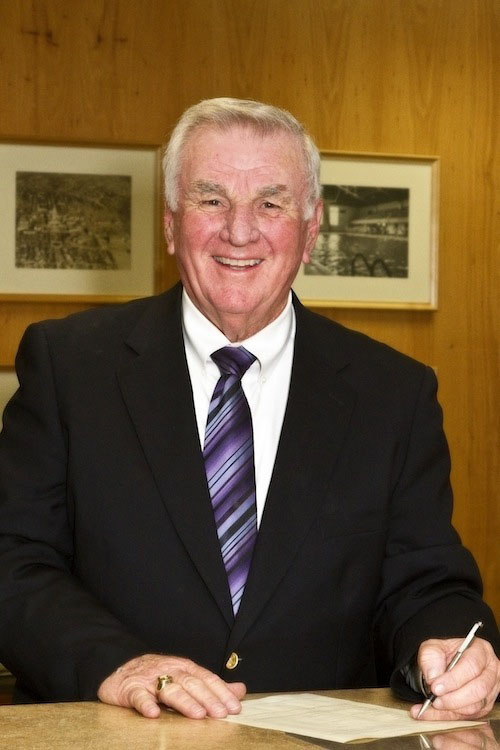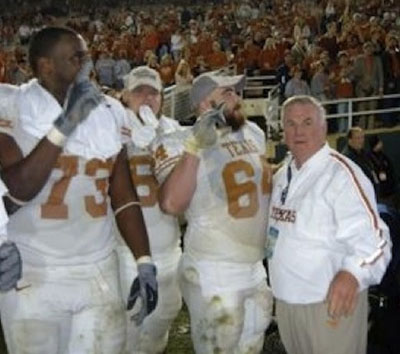Charlie Craven: Starting Out
Although he never formally held the title, Charles (Charlie) Craven was, in a very real sense, the University of Texas’ first strength coach. Craven began his undergraduate career in physical education at Texas in 1957. As a boy, growing up in nearby Leander, Texas, Craven played several sports, but especially loved baseball and football. During his childhood, Craven was also an avid reader, especially of comic books, as his family did not have a television. It was through comics that he was first exposed to weight training. Craven was intrigued by the Charles Atlas ads on the back of the comics he read, and as he recalls, he sent away for the Charles Atlas course.
“Cost me a couple of dollars . . . I thought that it would really be neat, I wanted to get a little bigger and stronger and faster, and that was the only vehicle,” said Craven. Once he arrived at UT, Craven began lifting with a friend who owned a set of weights and he began reading about strength and physiology.
During his senior year, Craven began assisting Dr. Stan Burnham, a faculty member interested in athletic training, with some conditioning work for the baseball team. Burnham had been approached by Bibb Faulk, the head baseball coach, for advice on how he could make his men hit the ball farther. As Craven recalls, the program Burnham designed primarily consisted of exercises with wrist weights, ankle weights, and weight vests with minimal rest between sets in the hot gym in the basement of Gregory Gym. Compared to modern sport-specific training, it probably was not the best method to build hitting power. However, it was resistance exercise, and according to Craven, it was his work with those baseball players and Stan Burnahm that convinced him he should attend graduate school.
As a graduate student, Craven taught activity classes for the Men’s Physical Training Program, and in the afternoons he assisted the athletic department in establishing a rudimentary strength training program a few of their athletes. During class days, Craven recalls that he would back his pickup truck into the alley behind Gregory Gym and then, “ I would get some bars and some weights, transport them to the stadium, unload them, let the athletes use them, and then bring them back for the next day of physical education classes.”
After finishing his masters, Craven taught at Del Valle High School for a year and then returned to UT as a full-time instructor for the Men’s Physical Training Program in 1964. According to Craven, both Burnham and head football coach Darrell Royal asked him help with weight training for the football team.
By this time Royal had recognized that in order to compete, the Longhorns would have to become more serious about strength work. Beginning as a volunteer, and later as a part-time employee of the athletic department, Craven became the de-facto strength coach for all men’s athletics in the mid-1960s.
“I worked with football, worked with basketball,” said Craven. “We did a lot of weight vest programs, jump and reach, and of course we had baseball, continuing on, through the last of the Bibb Falk era, into the Cliff Gustafson era.” According to Craven, it took about 12 years before UT coaches came to understand just how beneficial training would be for their athletes. “ . . . Coaches were very fearful, because these youngsters were going to become muscle bound,” said Craven. “A lot of these coaches didn’t want them lifting weights at all.”
Even Coach Royal, Craven claimed, did not embrace the program at first. He told Craven, “OK. We’re going to keep the training program, but I don’t want them to work too much, get too ‘taut’, get too big.” “Now, some of the coaches didn’t like that idea, but Coach Royal liked the idea,” said Craven. “He liked something new, but he wasn’t ready to embrace it fully, and I think that process took him to the mid to late ‘60’s.”


